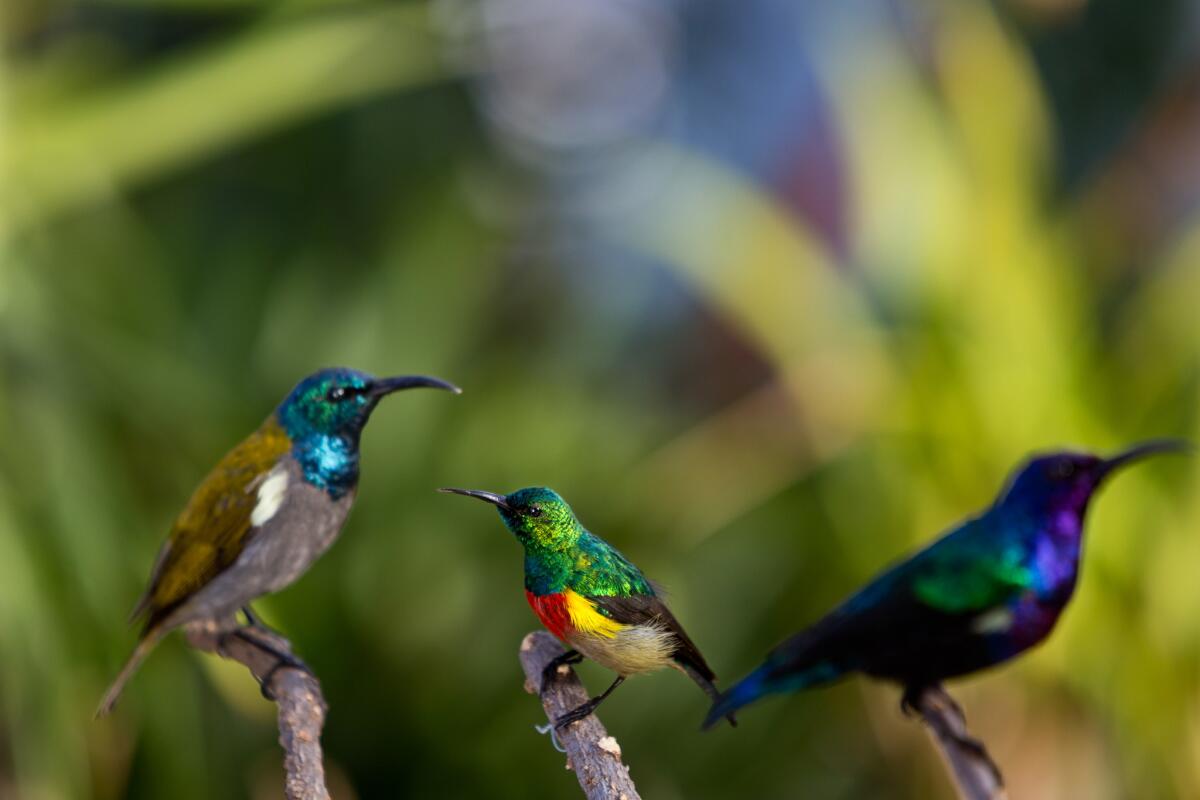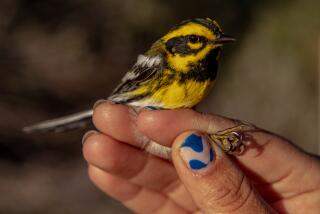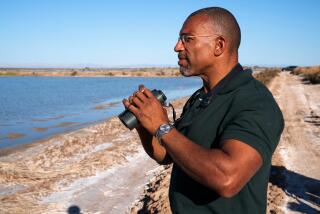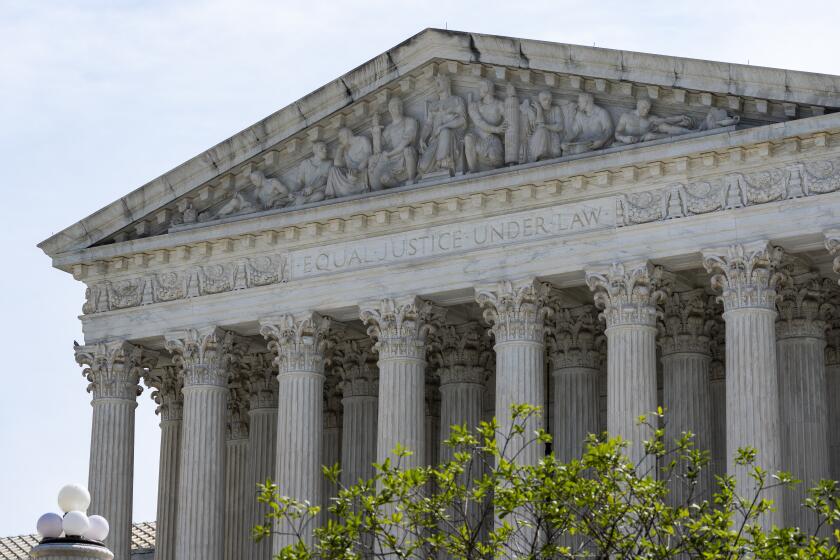Great Read: Taxidermist in demand for his ability to make bird replicas lifelike

- Share via
Igor Caragodin was looking for the perfect specimen. He and his crew had been riding for hours in the bed of a dusty safari truck across the Burkina Faso savanna. The sun reached high in the sky and the sub-Saharan winds seared their faces.
The group had found a few common guinea fowl near dawn, but Caragodin was scanning the dry bushes for something in particular. Then he pointed toward a rustle in the leaves — on a low-hanging branch, his quarry: a brown hammerkop.
------------
FOR THE RECORD
Feb. 11, 1:27 p.m.: An earlier version of this article gave an incorrect age for bird taxidermist Igor Caragodin. He is 52, not 55. It also misidentified a fellow taxidermist Darius Mostoufi as David Moustifi.
------------
Hired local hunters moved nimbly through the bushes. A single shot rang out. The form tumbled into the brush below. The hunters retrieved the bird and gave it to Caragodin.
He nestled it, almost with reverence. And then he removed its entrails with surgical precision.
The bird, and many others he tracked down on this two-week expedition, would spend much of its afterlife in the taxidermist’s hands before making a final flight to an exhibition in the U.S.
“I used to go out to the countryside as a child and watch birds for hours in the forest. The way they seemed to stop for a moment before disappearing into the bushes was magical,” Caragodin, 52, said after returning to Los Angeles from Africa. “Now I get to bring that moment to others.”
You might call Caragodin a jet-setting taxidermist: Museums send him on all-expense-paid trips to find birds. Judges in international taxidermy competitions — yes, international taxidermy competitions — praise his uncanny ability to make them lifelike. Fellow taxidermists follow his work like they would a favorite actor’s.
“Caragodin is the Anthony Hopkins of taxidermy. He’s not too self-confident, nor does he really like the attention,” said Darius Moustifi, a commercial taxidermist. “But his work is some of the best. You will be amazed when you see it.”
::
Several times a year, Caragodin goes on expeditions for museums. Two weeks in South America for parrots. Three for kingfishers in Africa.
Because of the high costs, museums have to be sure they’ve hired the right taxidermists for expeditions.
“We keep a short list of taxidermists,” said Sievert Rohwer, former curator for the Burke Museum of Natural History and Culture in Seattle. “But we deal with Caragodin because he has an extraordinary ability to mount birds.”
Caragodin, who was born in the former Soviet republic of Moldova, was working as the chief taxidermist at the State Darwin Museum in Moscow when Rohwer discovered him in 1998. The Burke Museum has hired Caragodin to collect bird samples on several expeditions and mount unusual bird specimens, including the decaying carcass of a California condor.
“We usually can call on a commercial taxidermist to work on a project, but they usually only deal with game animals,” Rohwer said. “Caragodin has the skills and knowledge to work on an array of birds because he has an expertise that we don’t typically find in a taxidermist.”
On a recent day, Caragodin got to work in his garage studio.
Craning over an icebox, he sifted through bodies of North American swallows and chickadees, then lifted out a small bird.
Eyes closed and wings tucked, the colorful bee-eater seemed to be sleeping in his hands. Caragodin deftly spread its wings as if it could take flight. Two surgical incisions flanking the breast remain hidden among the feathers. A slip of the pink revealed its hollow chest cavity, soft and clean like suede.
“Shaping the bird is one of the most difficult processes because you have to really imagine the bird before you start working,” said Caragodin, who opened his studio in California in 1999. “Every bird is different, so you have to think of each one as a new project.”
Amateur taxidermists frequently reach out to Caragodin on taxidermy forums for advice. Fellow taxidermists ask for him to consult on small birds and reconstructing damaged skins.
“Birds are the most difficult to work with because of their size and delicacy,” Moustifi said. “It’s not something most people can attempt when they first start or after a few projects. You really have to know what you’re doing.”
::
Taxidermy competitions have all the glamour and toil of American pageantry. After months of preening and body sculpting, competitors peacock for the attention of judges.
The 1999 World Taxidermy Championships was Caragodin’s first crack at the contest.
The criteria range from overall appearance to laser-like technique. The difference-maker for a winning piece could be as minute as the way a subject authentically balanced on one leg.
“I’ve seen flawlessly rendered and anatomically correct birds, but they don’t seem to have any energy,” said Stefan Savides, a veteran taxidermy judge. “They don’t impress me.”
Savides described the difficulty of working with birds.
“Imagine you had wrapped skin over a block of clay and you had to shape it like a human. That’s what it’s like to work in bird taxidermy,” Savides said. “The graceful curves have to account for its insides. You have to envision the bird from the inside out.”
At the 1999 event, Savides judged Caragodin and hundreds of other taxidermists over two days.
Caragodin arrived with his pieces in a small cardboard box and placed it on the end of a long display table. His Cooper hawk and family of white crowned sparrows sat among elaborate peacocks and cranes.
When he returned, there were several ribbons placed on his work.
“I could not believe it. This was my first international competition and I had won,” Caragodin said. “There had to be a mistake.”
He would go on to win first place at the next three international competitions and several at the state level.
“Caragodin’s work goes beyond what the average person can see,” Savides said. “We all have our own way to understand the world. For Caragodin, it’s through birds.”
::
These accolades attracted the attention of museums that requested his work.
“I would love to be like Caragodin,” said Moustifi, holding a glass of wine as he reclined in a patio chair outside Caragodin’s studio. “Traveling, and working with all those exotic birds. Who wouldn’t love that? I just do ducks over and over again.”
“And I would like to just do the same bird over and over,” said Caragodin, sitting on the ledge of his koi pond. A passing heron rested in a nearby flower bed.
“I want to get really good at one bird. Almost like it’s real.”
After a long career of jet-setting and accolades, Caragodin says he would trade it for less work and a few more hours of bird-watching.
He remembers following birds in the Moldovan countryside as a child. A rustle in a tree could become a goose chase. Decades later, he can still be found straying off the trails for birds near his house.
“When you rush through life, you miss these things. You miss these moments of something beautiful in nature,” he said. “That’s what I try to capture in my work.”
Caragodin returns to his studio, trying to perfect the resting expression on a pelican. The scene echoes those memories of bird-watching in his youth. Caragodin holds his breath. The pelican simply holds its pose, unaware of its admirer.
More to Read
Sign up for Essential California
The most important California stories and recommendations in your inbox every morning.
You may occasionally receive promotional content from the Los Angeles Times.














